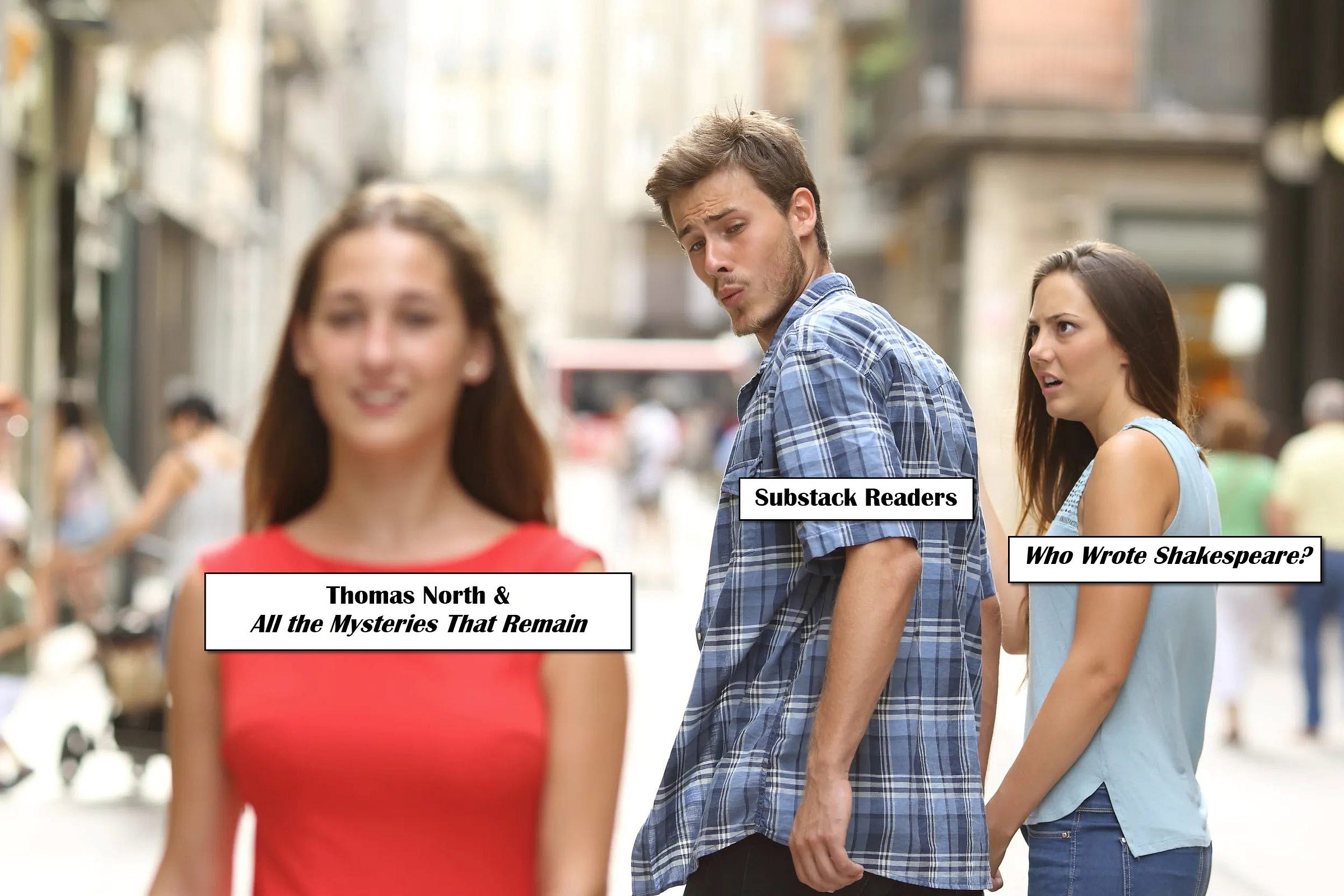The Stunning 400-Year-Old Secret at the Front of Shakespeare's First Folio that Explains Everything
How did everyone miss this?!
And at the end of this article, many of you are almost certainly going to be asking yourself the same question I think about daily: HOW ON EARTH DID EVERYONE MISS THIS?
This is a big day for All the Mysteries That Remain, as we are about to solve one of the more puzzling problems involving the true origin of Shakespeare’s plays. I’ve tried to write the article so that it is easily understandable to lay people—even as it answers questions that have vexed the most engrossed of Shakespeare researchers, both orthodox and heretical (like my dear friends over at
.)In 1623, Ben Johnson wrote one of the most famous odes one poet ever crafted for another—To the Memory of My Beloved the author Master William Shakespeare, and what he hath left us. The poem was prominently placed at the beginning of the first official collection of Shakespeare's plays known as the First Folio. Yet some eight years later, the poet Leonard Digges wrote a scathing rebuttal to Jonson’s ode, denouncing it as an attack against Shakespeare.1 He was so furious that he wanted Jonson's supposedly abusive poem removed for the publication of the Second Folio (1632)—and replaced with Digges’s own defense of the Stratford playwright, answering Jonson’s insults “point by point.”2 In 1693, the renowned Shakespeare enthusiast John Dryden responded similarly to Digges, labeling Jonson’s poem as “an insolent, sparing, and invidious panegyric.”3 And Brian Vickers has noted that Dryden’s “judgment has been echoed many times.”4
But no one has been able to explain what was so insolent and invidious about the poem—until now. As we shall see in this article, Jonson’s celebrated ode contains a shocking secret—a dead giveaway to the true origin of the canon. In other words, the answer to the most significant literary question in history—who was the original author of Shakespeare’s plays?—has been sitting prominently in the front of the First Folio for the last 400 years. Jonson was not being remotely subtle. And, at the end of this article, you are almost certainly going to be asking yourself the same question I think about daily: HOW ON EARTH DID EVERYONE MISS THIS?





